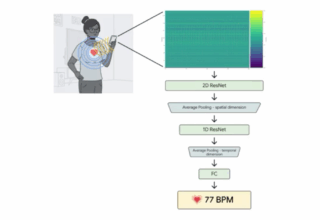
It’s summer and summer is a fantastic time to enjoy sparkling adult beverages. Champagne is an obvious-but-pricy choice, and I deeply hate spending more than $20 on anything, let alone booze, so I turn to prosecco. Prosecco is good. But prosecco may be harder to get soon, so let’s talk about some other options.
It’s Friday afternoon, you’ve made it through the long week, and it’s time for Happy Hour, Gizmodo’s weekly booze etc. column. A cocktail shaker full of innovation, science, and substances.
Reports of an impending prosecco shortage areprobably exaggerated, but they got me thinking of alternatives sparkling wines. At first I thought I could frugally imitate prosecco (or create a whole new delicious category of sparkling alcohol like a goddamn genius) by putting white wine in my Sodastream.
This was a terrible dumb idiot plan. Sodastreams react violently to DIY wine carbonation, for starters. Plus I never would’ve been able to replicate the taste. Prosecco gets its bubbles from fermentation by something called the Charmat process, which has nothing in common with forcibly adding bubbles with a trendy home carbonation machine. And the Glera grapes used to make it aren’t usually used in still wines.
So I went looking for some other types of sparkling wine to drink instead of prosecco at reasonable prices. Turns out there are plenty!
Vinho Verde
“Vinho verde” translates to “green wine,” but it’s not a reference to the color. It means the wine is generally “young,” or under a year old. It’s also not always a sparkling wine-more traditional variations are merely fizzy, with very slight carbonation. If you liked prosecco but found its bubbles too aggressive, you’ll find a friend in a lightly effervescent double V. (I don’t know if anyone calls it “double V” but this is my blog, try and stop me.)
I live in a Portuguese neighborhood and vinho verde is the correct thing to drink on a patio while thinking about whether life would be better in Porto. Epicurious has a good rundown of the varieties of vinho verde, and you can easily find a good bottle for under $10.
Cava
Spain’s answer to champagne uses xarel-lo, macabeo, and parellada grapes to produce a fresh-tasting sparkler. Honestly, I don’t know what that means, but in case you are a Grapehead, it seemed like good information to pass along. Cava is usually drier than prosecco, but its just as easy on the wallet. SeriousEats has some good recommendations, including the Vega Barcelona, which I recently used to make a sparkly sangria.
Crémant
Like champagne, Crémant is from France. Like champagne, Crémant is delicious. It’s basically the Solange of sparkling wine, constantly upstaged by its more-famous sibling but it has its own thing going on, fuck Jay Z. Plus, France’s second-banana sparkler is a lot more affordable. There is a bottle of cremant I’ve been buying called Château De Montgueret, and it is $19 and it is very tasty.
Lambrusco
Lambrusco is the name of an Italian grape used in a variety of wines, including an Italian sparkling wine that’s also called Lambrusco. (I didn’t say this wouldn’t be confusing.) It got a bad reputation among wine people in the US because a sickly-sweet brand called Riunite had a moment of trendiness, but that reputation has been partly rehabilitated. There’s a good article on some affordable, non-shitty Lambruscos on Epicurious, and I plan to pick up a bottle of Alfredo Bertolani Rose Lambrusco Rosato, a $15 rosé that looks like it’ll make all my problems go away.
Moscato
Honestly every type of Moscato I’ve tried tasted like someone put 17 sugar cubes in a dubious cocktail of seltzer and lukewarm urine.
This Italian sparkling wine has been gaining popularity in the US for the past five years, and it’s very affordable, so maybe I’ve just had all the wrong Moscato. I didn’t have time to try a new one. I avoided it because I was wary of feeling like drinking liquid diabetes, so if you have a favorite bottle, let me know in the comments
[“source-gizmodo.in”]














